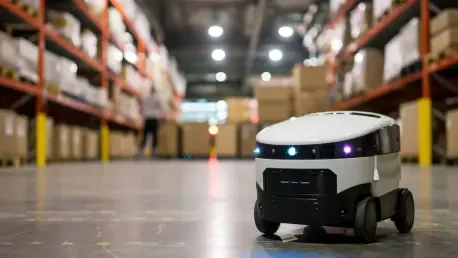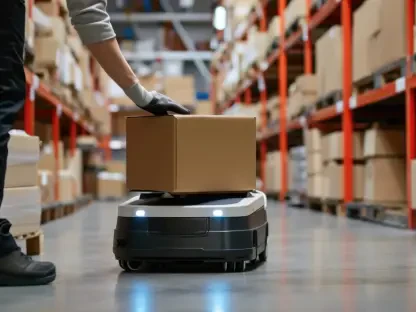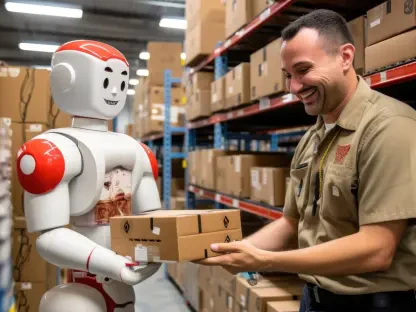I’m thrilled to sit down with Rohit Laila, a seasoned veteran in the logistics industry with decades of experience spanning supply chain and delivery. Rohit’s passion for technology and innovation has positioned him as a thought leader in warehouse automation, where he’s helped countless businesses navigate the complexities of modernizing their operations. In this conversation, we dive into the true value of automation, exploring how it goes beyond mere cost savings to drive resilience and growth, the strategic necessity of adopting these technologies, and the practical steps companies can take to achieve a strong return on investment.
How do you define the return on investment for warehouse automation beyond just cutting costs?
When we talk about ROI in warehouse automation, it’s easy to focus on the dollar signs, but that’s only part of the story. Automation brings flexibility to adapt to changing demands, reliability to keep operations running smoothly, and the ability to weather storms like labor shortages or unexpected spikes in orders. These elements create a buffer that protects a business’s reputation and customer trust, which are often harder to rebuild than a budget. For instance, being able to maintain output during a seasonal rush without scrambling for extra hands—that’s a value you can’t always put a price on, but it directly impacts your bottom line through sustained sales and loyalty.
Why do you believe some businesses can’t afford to ignore automation in today’s landscape?
It’s simple—many industries are at a point where manual processes just can’t keep up. Whether it’s due to labor shortages or the sheer volume of demand, sticking to old methods risks falling behind. Automation isn’t just a luxury; it’s a lifeline. Without it, companies face empty shelves, delayed orders, and frustrated customers who won’t hesitate to turn to competitors. I’ve seen businesses struggle to hire enough staff during peak times, and without automated systems to bridge that gap, they lose not just sales but market share. It’s about survival as much as it is about efficiency.
Can you share a real-world example where automation proved crucial for maintaining customer satisfaction?
Absolutely. I recall working with a mid-sized retailer a few years back who faced massive delays during holiday peaks due to staffing issues. Orders were piling up, and customers were vocal about their dissatisfaction online. After implementing a basic automated picking system, they managed to process orders at nearly double the speed, even with a reduced crew. That holiday season, instead of losing customers, they actually gained loyalty because they delivered on time. It showed them—and their customers—that they were serious about reliability, and that trust translated into repeat business.
What are some key factors that influence the initial cost of automating a warehouse?
The upfront cost of automation hinges on several variables. The size of the warehouse is a big one—larger spaces often need more extensive systems. Then there’s the complexity of existing processes; if you’re starting from scratch versus retrofitting, that changes the investment. The level of automation also matters—basic conveyor systems cost less than full robotic solutions. And don’t forget infrastructure; older facilities might need upgrades to support new tech. It’s a tailored puzzle, and every piece affects the price tag. That’s why a thorough assessment upfront is critical to avoid surprises.
How does automation contribute to a company’s competitiveness during high-demand periods?
High-demand periods, like holiday seasons, are make-or-break for many businesses. Automation gives you the capacity to scale up without the chaos of last-minute hiring or overtime costs. It ensures you can handle surges in orders without sacrificing speed or accuracy. I’ve seen automated systems allow companies to keep shelves stocked and orders shipped on time, even when competitors are struggling. That reliability wins customers over when they’re most likely to notice delays elsewhere. It’s a competitive edge that’s hard to replicate with manual labor alone.
What’s a realistic timeline for businesses to start seeing returns on their automation investments?
The timeline for ROI varies widely, but generally, you’re looking at anywhere from 4 to 14 years, depending on the scale and goals of the project. Smaller setups might take longer because the efficiencies aren’t as pronounced early on, while larger systems can hit break-even faster due to bigger savings on labor and higher output. It also depends on how well the system is integrated and utilized. A company that actively optimizes their automation from day one—say, by training staff effectively—will see returns sooner than one that treats it as a set-it-and-forget-it solution.
What advantages do you see in starting with smaller, modular automation systems rather than a full overhaul?
Starting small with modular systems is a game-changer for many businesses. It lowers the initial financial barrier, so you’re not betting the farm on a massive rollout. You can test the waters, see real results—like faster picking or fewer errors—and build confidence in the tech. Plus, these systems are designed to scale; you can add modules as budget and needs grow, without disrupting operations. It’s a practical way to dip your toes into automation while keeping an eye on long-term expansion. I’ve seen companies start with just a couple of automated units and grow into fully integrated systems over a few years, all while managing costs effectively.
What is your forecast for the future of warehouse automation over the next decade?
I’m incredibly optimistic about where warehouse automation is headed in the next ten years. We’re going to see even smarter systems, driven by advancements in AI and machine learning, that can predict demand fluctuations and optimize workflows in real time. Robotics will become more accessible, even for smaller players, as costs come down and modular options expand. I also expect a bigger focus on sustainability—think energy-efficient systems and better waste management through automation. The challenge will be integration; companies will need to ensure these technologies work seamlessly with existing operations. Overall, I believe automation will become the backbone of logistics, not just a competitive advantage, but a fundamental requirement to stay in the game.








